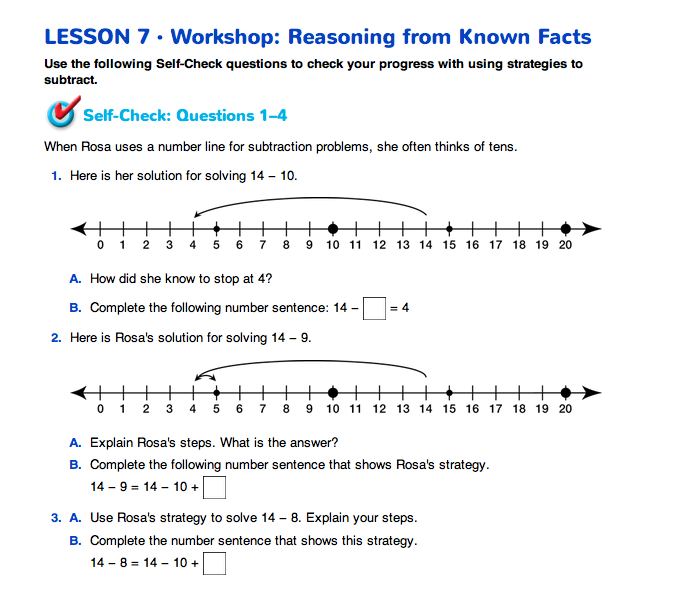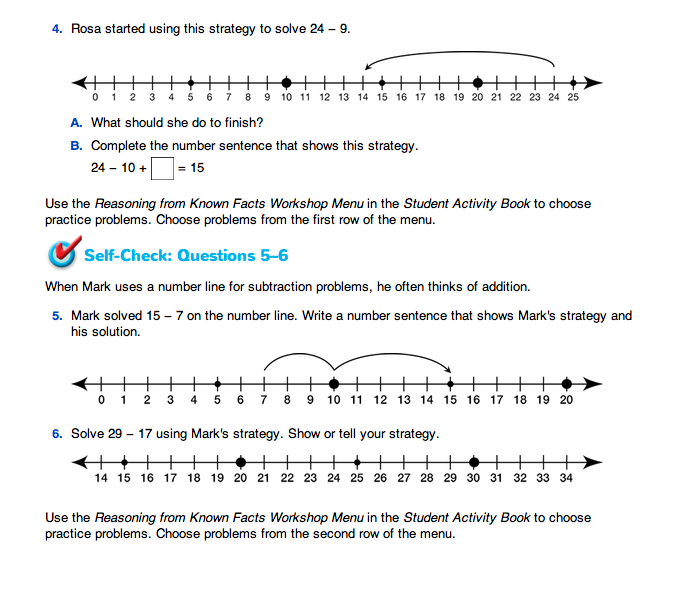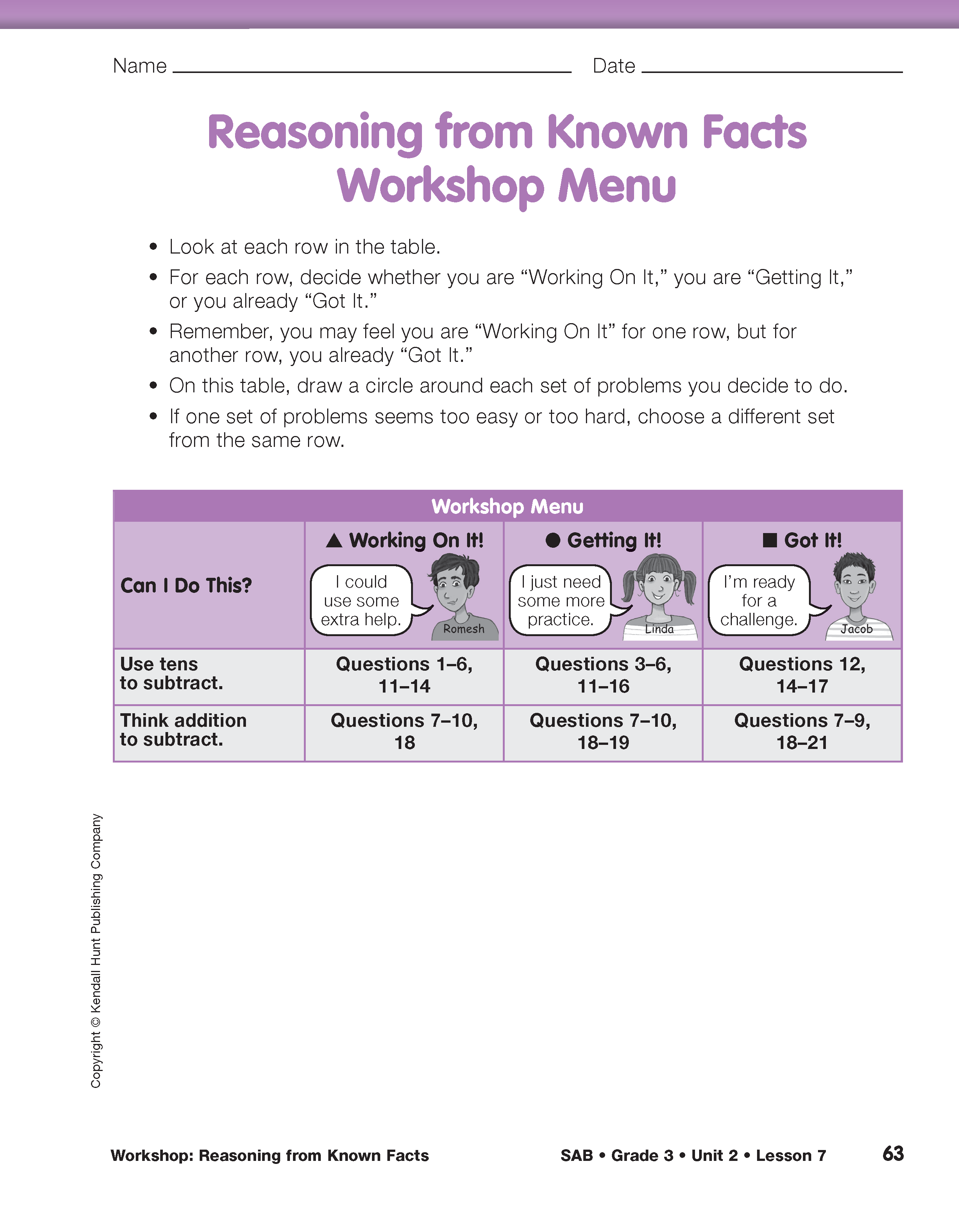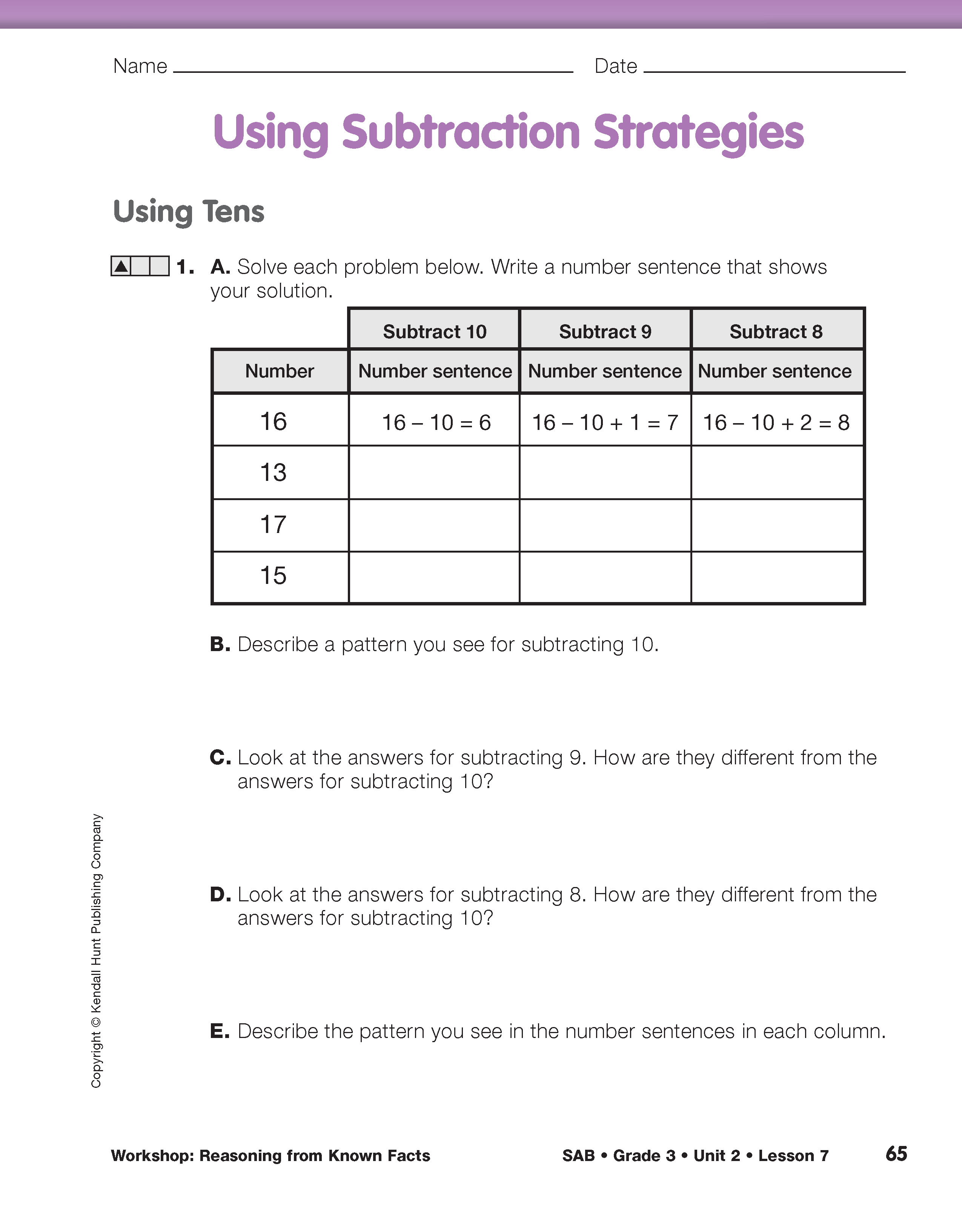Workshop: Reasoning from Known Facts
Est. Class Sessions: 1Developing the Lesson
Using Tens to Subtract. Ask students to sketch a number line from 0 to 15 on a sheet of paper. As you observe students, ask them to solve 14 – 9 using the number line. Two correct solutions and one incorrect solution are shown in Figure 1.
Student A is reasoning from known facts. Student B solved the problem correctly but is using a counting-back strategy rather than reasoning from known facts. Students that develop strategies for reasoning with their math facts will be prepared to apply these mental math strategies to other situations.
Self-Check and Plan for the Workshop. Introduce students to Rosa's strategies using Self-Check: Questions 1–4 on the Workshop: Reasoning from Known Facts pages in the Student Guide. Ask student pairs to discuss and answer these questions. Then ask a student to demonstrate Rosa's solutions to the problems on the class number line as they explain her steps. Ask students to match the hops and numbers on the number line to the numbers in the number sentence. For example, the number sentence in Question 2B is 14 – 9 = 14 – 10 + ![]() .
.
A possible explanation for this number sentence:
“The problem is 14 minus 9. So you start at 14 and make a big hop of 10 backwards and you land on 4. That's an easy jump because you know that you land on 4 because 10 + 4 = 14. Then, since you are only subtracting 9, you have gone 1 too far, so you hop back 1. That is what goes in the box. You land on 5 and that's the answer.”
Question 3 asks students to solve 14 − 8 using the same strategy on the number line. After partners have time to solve the problem, ask a volunteer to show the solution using the class number line or a number line sketched on the board. Figure 2 shows a solution.
Question 4 asks students to extend the strategy to larger numbers. Observe students as they work together to solve the problems and report their solutions. This will give you added information that will help you decide which of the activities on the Workshop Menu will meet particular students' needs.
Refer students to the Reasoning from Known Facts Workshop Menu in the Student Activity Book. Have students think about the “Can I Do This?” question in the first row of the table. Ask students to think about their work on the Self-Check Questions to decide which problems to choose from the following groups:
- Students who are “working on it” and need some extra help should circle the problem set marked with a triangle (
 ). These problems provide scaffolded support for developing the essential underlying concepts as well as some opportunities for practice.
). These problems provide scaffolded support for developing the essential underlying concepts as well as some opportunities for practice. - Students who are “getting it” and just need more practice should circle the problem set marked with a circle (
 ). These problems mainly provide opportunities to practice with some concept reinforcement and some opportunities for extension.
). These problems mainly provide opportunities to practice with some concept reinforcement and some opportunities for extension. - Students who have “got it” and are ready for a challenge or extension should circle problems marked with a square (
 ). These problems provide some practice and then move into opportunities for extension.
). These problems provide some practice and then move into opportunities for extension.
Check students' choices to see how well they match your own assessment of their progress on using reasoning strategies to subtract [E5]. Help students make selections that will provide the kind of practice they need.
Match groups of students who have chosen the same sets of problems from the “Use tens to subtract” row on the Workshop Menu. Problem sets for this Expectation are on the Using Subtraction Strategies pages in the Student Activity Book. (Minis of the student pages are in the Answer Key.) Have students work with their groups to solve the problems they choose. Again, flexibility is important. If problems seem either too easy or difficult for students, they should adjust their choices from the menu.
Thinking Addition to Subtract. Refer students to Mark's strategies using Self-Check: Questions 5–6 on the Workshop: Reasoning from Known Facts pages in the Student Guide. Ask student pairs to discuss and answer these questions. Discuss each of the questions with the whole class. Ask students to share their solutions and explain their reasoning. Facilitate a class discussion of students' solutions.
Again, refer students to the Reasoning from Known Facts Workshop Menu in the Student Activity Book. Have students think about the “Can I Do This?” question in the second row of the table. Ask students to think about their work on the Self-Check Questions to decide which problems to choose. Then draw a circle around them.
Match groups of students who have chosen the same sets of problems from the “Think addition to subtract” row on the Workshop Menu. Problem sets for this Expectation are on the Using Subtraction Strategies pages in the Student Activity Book. (Minis of the student pages are in the Answer Key.) Have students work with their groups to solve the problems they choose. Again, flexibility is important. If problems seem either too easy or difficult for students, they should adjust their choices from the menu.























